
Pest Library
Your Guide To Common Pests In Denton County, Texas
When pests invade your home or business, you need to know just what you’re dealing with. Our pest library is the resource you need! In it, you’ll find information on the pests that are most common in our area of Denton County, TX. Learn what they look like, what problems they cause, and how to get rid of them – all in one handy guide!
Ants
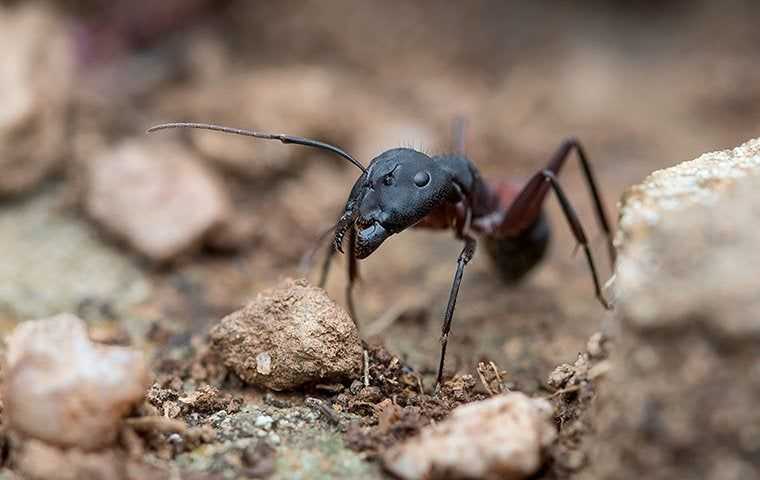
As one of the most common and well-known property invaders, ants are opportunistic pests that have the potential to become a problem on any property that offers them easy access to food, water, and shelter. Ants nest outside but often find their way indoors while foraging for food. Once inside, they may build a satellite nest to expand their colony in a spot that's close to food sources. Ants live together in vast colonies, making them hard to control.
Carpenter ants, fire ants, and little black ants are the most common ant species in our area. The large, black carpenter ant is a destructive species. After finding their way into a home, carpenter ants build their satellite nests inside structural wood. They do not feed on the wood they invade; they tunnel through it to create nesting galleries. The fire ant is an example of a dangerous ant that delivers painful, venom-filled stings that may trigger allergic reactions in people. Fire ants are quick to anger and extremely aggressive. The little black ant is a nuisance ant that invades homes in large numbers. They are often seen on sidewalks and driveways in long trails as they forage for food. While these ants aren't known to cause any significant health risks or property damage, they do contaminate food and are difficult to control. Partnering with a professional is the best way to eliminate current ant problems and prevent future problems with these pests.
To prevent problems with ants, inspect the exterior of your property and seal any openings you find in the foundation, exterior walls, or roofline. Remove food sources by keeping locking lids on trashcans and compost bins and store food inside in the refrigerator or in airtight containers. Keep kitchen and pantry areas clean and free of food debris. Carpenter ants are attracted to areas of moisture and water-damaged wood; fix leaky pipes and keep moisture levels low by using dehumidifiers and ventilating crawlspaces. Pick up pet food and water bowls every evening, as they are popular place for ants to forage for food and water.
Cockroaches
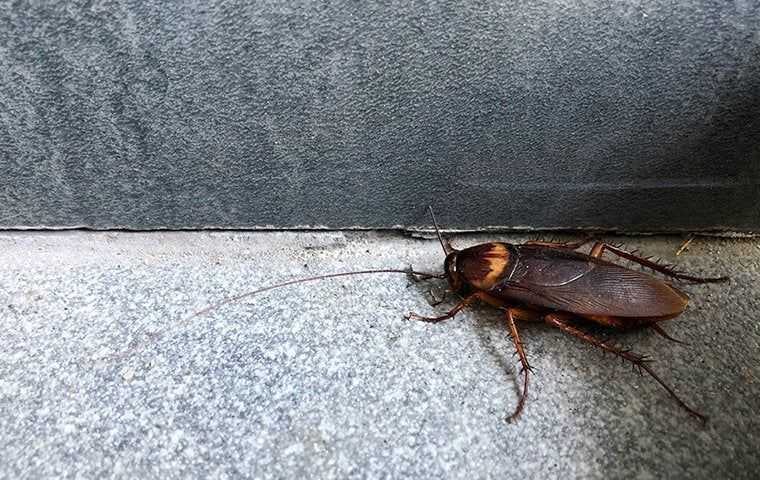
With thousands of species living worldwide, cockroaches are resilient pests that lives in urban, rural, and suburban areas. Cockroaches are insects and have flat, oval-shaped bodies. The head, compared to their bodies, is much smaller. Cockroaches are social scavengers and feed on a wide variety of food and non-food items. They live together in large groups, hiding out in dark, damp locations during the day and emerging at night to feed. Cockroaches can find their way into any home or business, either on their own while foraging for food or accidentally inside of bags, mail, used appliances, or furniture.
There are thousands of species of cockroaches living throughout the world, but only those species that live near people are problematic. Two of the most common cockroaches that invade properties in our area are the German cockroach and American cockroach. American cockroaches are the largest species in our country, while German cockroaches are much smaller and are the most common species that get into our properties. Cockroaches are filthy creatures; before entering your home or business, they've been in places like drains, sewers, trash cans, and other less-than-sanitary environments. Cockroaches carry bacteria, human pathogens, and parasites on their bodies that they spread wherever they go.
To prevent problems with cockroaches, keep foraging cockroaches out of your home or business by sealing any entry points. Inspect the foundation, roofline, and exterior walls – sealing any openings you find. Place mesh covers over vents and put weatherstripping around windows and doors. It is also a good idea to install door sweeps on all exterior doors. Reduce moisture levels in and around your property by maintaining gutters, utilizing dehumidifiers, and fixing leaky pipes. Eliminate food sources by keeping locking lids on trash cans and compost bins, keeping outdoor eating areas clean, and storing food in the refrigerator or in containers with airtight lids.
Mosquitoes
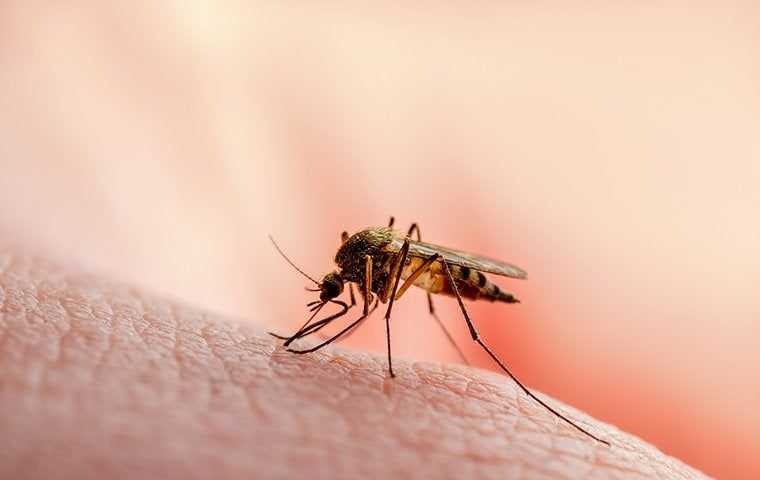
Mosquitoes are biting insects that live in large numbers on any property and are attracted to areas of standing water. Adult mosquitoes have slender, fly-like bodies with narrow wings, thin legs, and extended mouthparts that they use for feeding. There are more than 200 species of these dangerous pests living in the United States. Female mosquitoes feed on the blood of people and animals to get the protein needed to create viable eggs. Because they feed on a lot of different hosts, mosquitoes are vectors of many serious diseases. Despite their small size and ability to be squished with the swat of your hand, mosquitoes are one of the world's most dangerous insects because of the diseases and parasites they spread.
Female mosquitoes lay their eggs on top of standing water. Potential breeding sites for mosquitoes include planters, buckets, wading pools, old tires, clogged gutters, ponds, drainage ditches, pet dishes, trash cans, and low-lying areas in driveways. Flowering plants and trees also attract mosquitoes, as both females and males use plant nectar as their primary food source. Additionally, mosquitoes will use tall grass, trees, landscaping, or overgrown vegetation to rest and hide in during the heat of the day.
To prevent problems with mosquitoes, the best way to help reduce mosquito activity on your property is to get rid of any standing water. Store containers that collect water should upside-down when not in use, keep gutters clear of standing water, and repair leaking hoses or faucets. Make sure to empty and refill birdbaths, wading pools, and water bowls daily with fresh water. Get rid of resting spots by keeping the grass on your property cut short, eliminating overgrown vegetation, and pruning shrubs, bushes, and trees.
Rodents
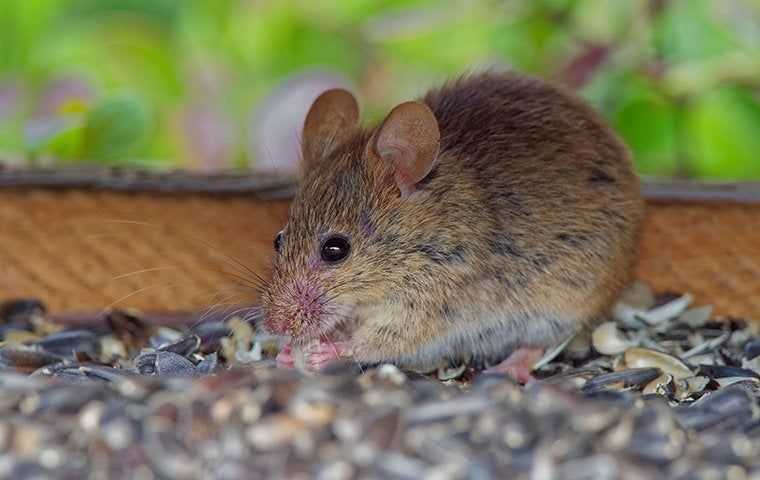
All rodents, no matter their species, have front incisors that continuously grow throughout their entire lifetime. To prevent their teeth from overgrowing, they gnaw on all kinds of objects. When mice and rats find their way into our homes and businesses, their sharp teeth cause a lot of damage to your property and personal items. They also contaminate food and surfaces with their saliva and excrement, and introduce diseases and bacteria that make people ill. Keeping rodents off your property is essential to keep a safe and healthy environment.
Rodents are very successful mammals that live and thrive in a wide variety of climates and environments, both indoors and outdoors. Homes, businesses, wooded areas, fields, gardens, parks, and urban areas are all places you'll find rodents. Over time, as our habitats have merged, mice and rats have learned to rely on people for some of their needs, including food and shelter. Keeping mice and rats out of our homes and businesses is difficult because they are considered commensal pests – meaning they want to share our table.
To prevent problems with rodents, eliminate their access to food sources by keeping tight-fitting lids on trash cans and compost bins, removing bird feeders, keeping garden areas cleaned-up, and picking up uneaten pet food each night. Eliminate nesting spots by removing fallen trees and tree stumps, cutting back shrubs and bushes, and keeping grass cut short. Stop mice, rats, and other rodents from entering your home or business by sealing spaces in exterior walls, the foundation, or the roofline. Place caps on chimneys and put wire mesh over vents leading into your property.
Spiders
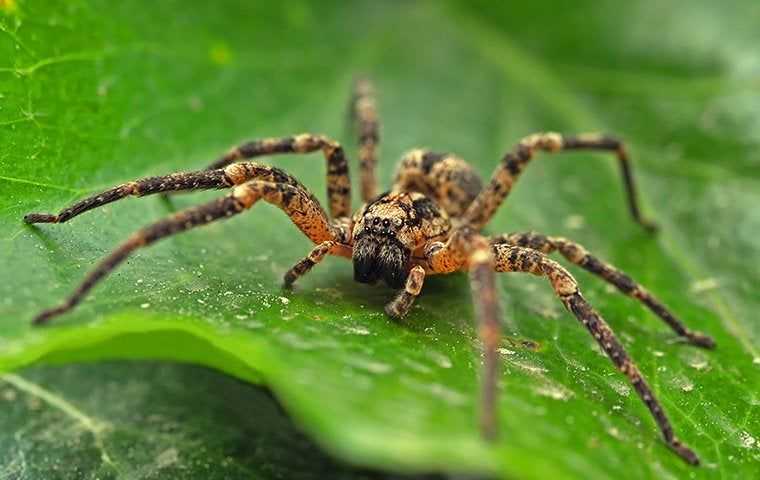
Spiders primarily live outside and are very eco-important, hunting and feeding on a variety of nuisance insects and garden pests. Though they prefer living outdoors, spiders often make their way into homes and outbuildings like garages, sheds, and barns while following their prey. Once inside, they tend to stay until they are forced to leave or there is no more food. All spiders have two body regions (cephalothorax and abdomen), eight legs, and fangs. They are wingless and have no antennae. House spiders, wolf spiders, black widows, and brown recluse spiders are all species that live in our area.
Spiders are reclusive by nature and, whether living inside or out, will choose dark, secluded spaces to build their webs or burrows. Gardens, tall grass, shrubs, bushes, woodpiles, doorways, basements, corners of rooms, and areas under furniture are ideal places for spiders to hide. Whether a spider has venom that is strong enough to affect a person's health determines if they are a dangerous spider or a nuisance spider. House spiders and wolf spiders are examples of nuisance spiders, and the black widow and brown recluse are examples of dangerous spiders. Dangerous or not, no spider should feel welcome enough to turn your property into their home.
To prevent problems with spiders, reduce the number of places they and their sources of food (insects) can hide. Clear any excess debris from your property such as fallen trees, woodpiles, rock piles, and overgrown vegetation. Spiders often feed on garden pests, so place garden areas a distance away from the exterior walls of your home or business. Keep spiders and insects out by sealing any openings in the foundation, exterior walls, or around windows and doors. Inside, regularly vacuum and dust – especially the corners of rooms, inside closets, and under furniture. Limit indoor hiding spots by limiting clutter in storage areas.
Termites
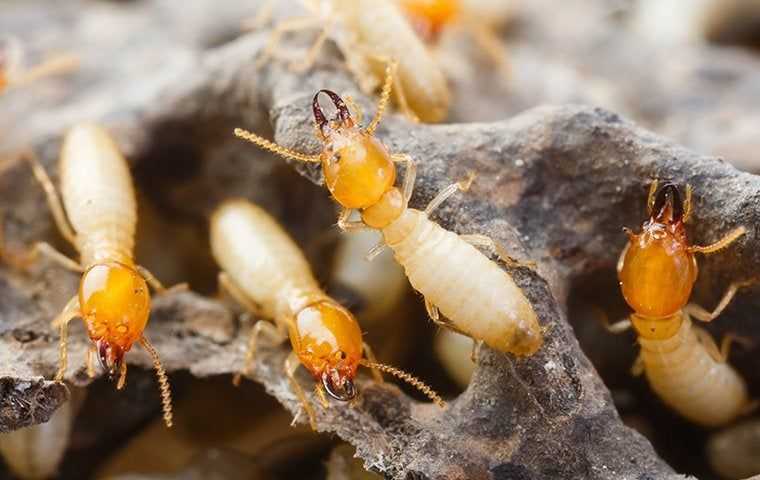
Termites are one of the few organisms able to feed on the cellulose found in wood, plants, and other organic materials. In nature, their feeding habits are beneficial, and they help to break down decaying material. When termites find their way into homes and other structures, however, their feeding habits turn destructive. Termites go back and forth from their nests to food sources each day, traveling underground or through mud tubes that they create. The subterranean termite is the most widespread species of termite in the United States; as their name states, these termites nest underground. Subterranean termites do not nest in the wood they are feeding their colony with.
Subterranean termites enter homes and other structures through cracks in the foundation or through wooden structures that are making direct contact with the ground. Porch steps, deck supports, wood trim, and wood shingles are common entry points. Once inside, they begin feeding on the structural wood below floors, above ceilings, and behind walls. They are especially attracted to wood that has been damaged by water or is decaying. Termites can move in and out of a structure invisibly, allowing them to work for months or years before being detected. At this point, the damage they've done is costly to repair and is not covered by most homeowners insurance, so a proactive approach to protecting your property from wood-eating termites is a must!
To prevent problems with termites, reduce excess moisture in and around your property. Fix leaky pipes, keep gutters clean, ventilate crawlspaces, and use dehumidifiers to dry out basements. It is also important to eliminate as much soil-to-wood contact on your property as possible. Create an 18 inch stone barrier between any mulch or soil and your foundation. Remove fallen trees, tree stumps, piles of leaves, and other organic debris that act as food sources for termites.
The professionals at Texas Star Pest & Termite understand how serious a pest infestation is and will provide the services necessary to eliminate pests from your home or business and prevent them from returning. To request your free inspection and get started with your service, contact Texas Star Pest & Termite today!